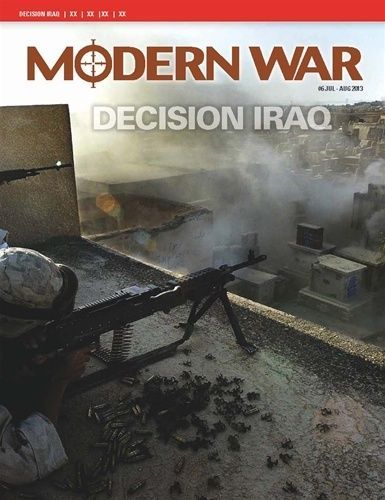Decision: Iraq (2013) Board Game
Decision: Iraq is a wargame that simulates modern warfare in Iraq. It was released in 2013 by Decision Games, a publisher known for producing strategic and historical board games. The game is designed by Tom Willcockson and Joe Youst, with artwork by Decision Games.
Game Components of Decision: Iraq
How To Setup Decision: Iraq
To set up the game, players deploy their units into the region boxes on the map, distinguishing between “open” and “infrastructure” areas. Each region box is named for a specific geographic area, such as the “Green Zone.” Players must ensure their units are correctly placed according to the scenario setup rules, which include initial unit deployments and Netwar Index starting values.
Gameplay Mechanics and Game Objective
Mechanics
Game Objective
The objective is to establish control over Iraq by having the most Netwar Points at the end of the 2008 turn. The game ends immediately if one player’s Netwar Index falls below zero.
Player Experience
Players experience a complex and dynamic game that simulates the challenges of counterinsurgency operations. The game requires strategic planning, especially in managing Netwar Points and choosing the right combat approach. The distinction between open and infrastructure areas adds a layer of realism, reflecting the need for forces to be embedded among the population to achieve stability.
Pros
Cons
Personal Thoughts on Decision: Iraq
**Decision: Iraq** is ideal for wargame enthusiasts and those interested in military history, particularly the Iraq War. It offers a challenging and realistic simulation of counterinsurgency operations, requiring players to think strategically about resource management, unit deployment, and combat tactics. However, its complexity may deter casual gamers, making it more suited for experienced players looking for a deep and immersive wargaming experience.
We are supported by our audience. When you purchase through links on our site, we may earn an affiliate commission, at no extra cost for you. Learn more.

